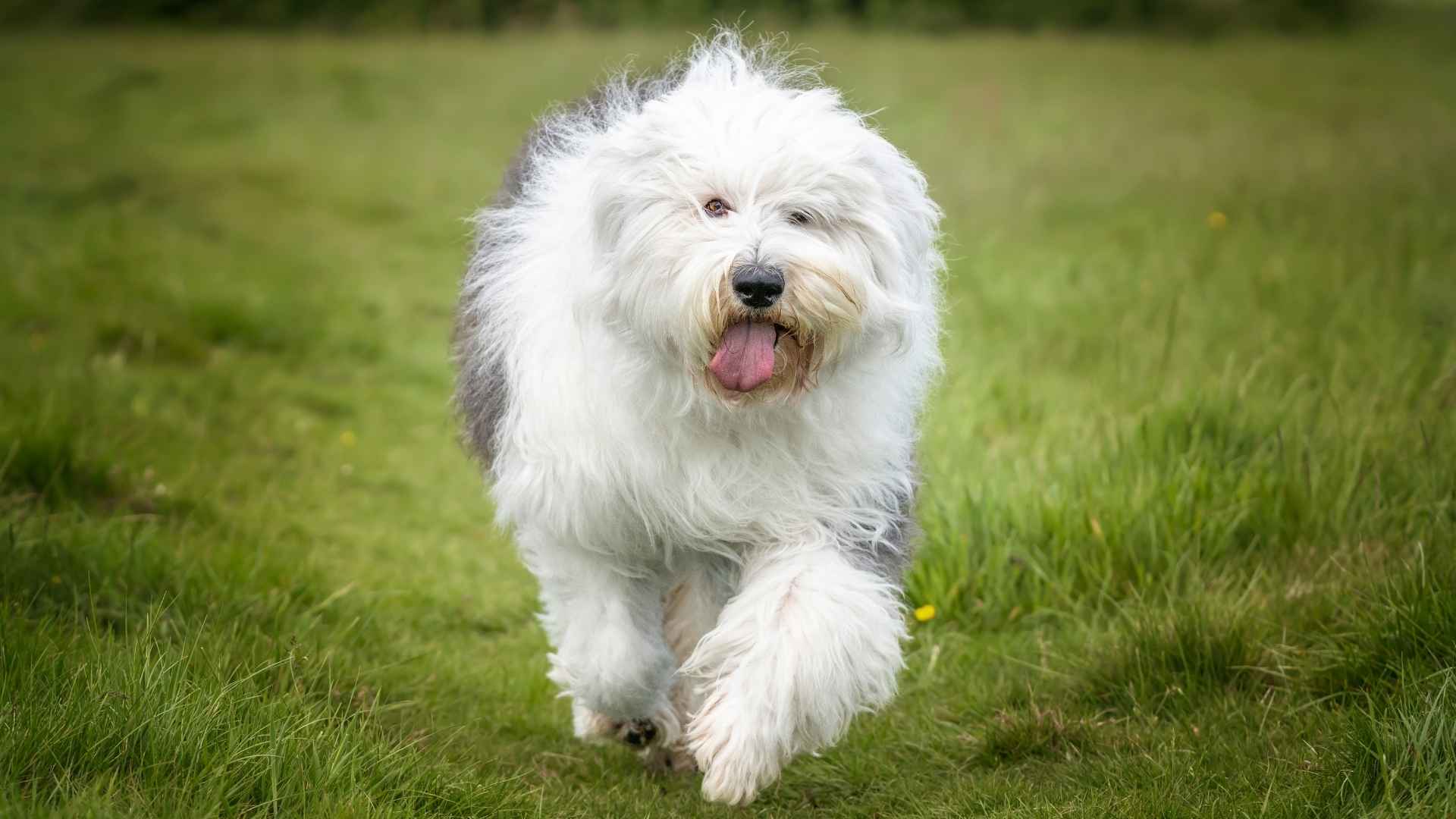If you’re dreaming of a dog that’s as clever as they are, cuddly, full of energy, and totally devoted to their humans, herding dog breeds might just steal your heart (and your socks). These hardworking pups are born with a mission: to move flocks, manage chaos, and do it all with impressive focus and flair.
Whether bounding through open fields or trotting alongside their person, herding dogs are all about purpose, play, and a whole lot of personality. Some like to lead the charge, others prefer to bring up the rear, and a few do a little bit of everything, always keeping their eyes on the prize.
And when they’re not working, they’re loyal, loving companions who stick to their families like Velcro. If you’re looking to add a four-legged overachiever to your crew, get ready to fall in love. Let’s dive into the world of sheep-herding dog breeds—you’re in for a tail-wagging good time!
Sheep Herding Dog Breeds
1. Bergamasco Sheepdog
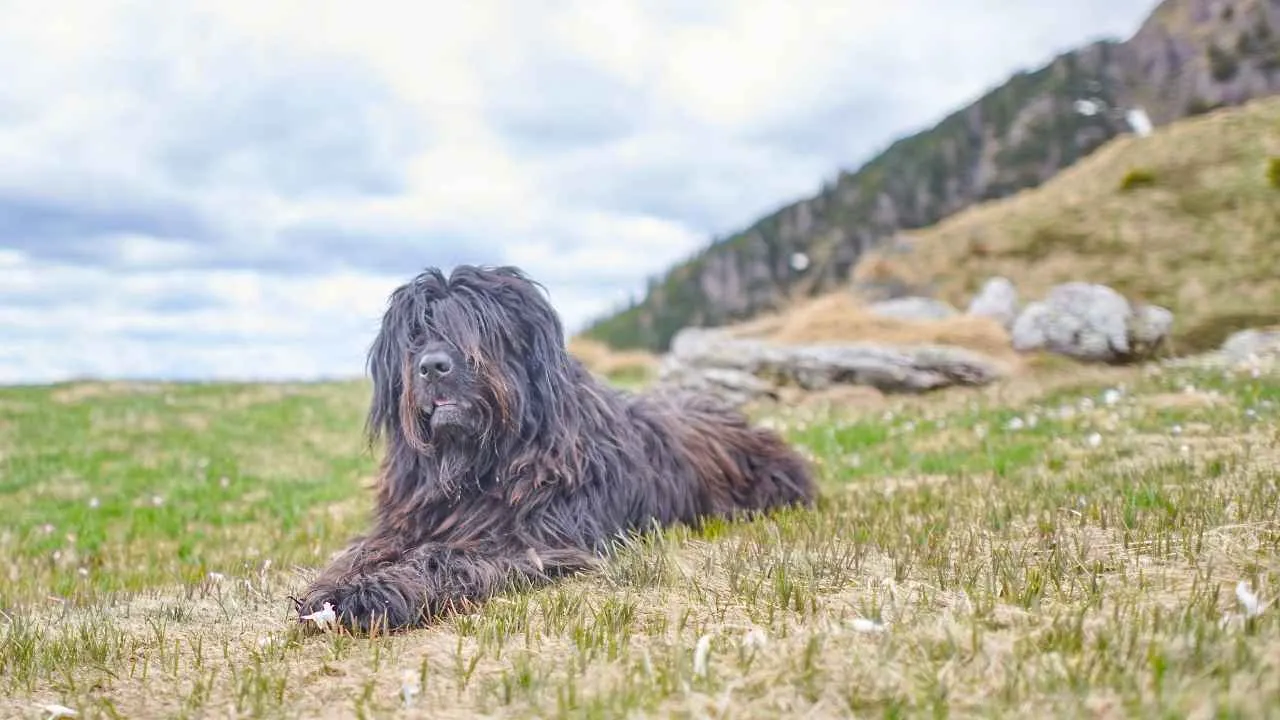
With its shaggy, mop-like coat and soulful gaze, the Bergamasco Sheepdog is truly a sight to behold. Though its exact roots are a bit of a mystery, this ancient breed has called the Italian Alps home for centuries, especially around the city of Bergamo.
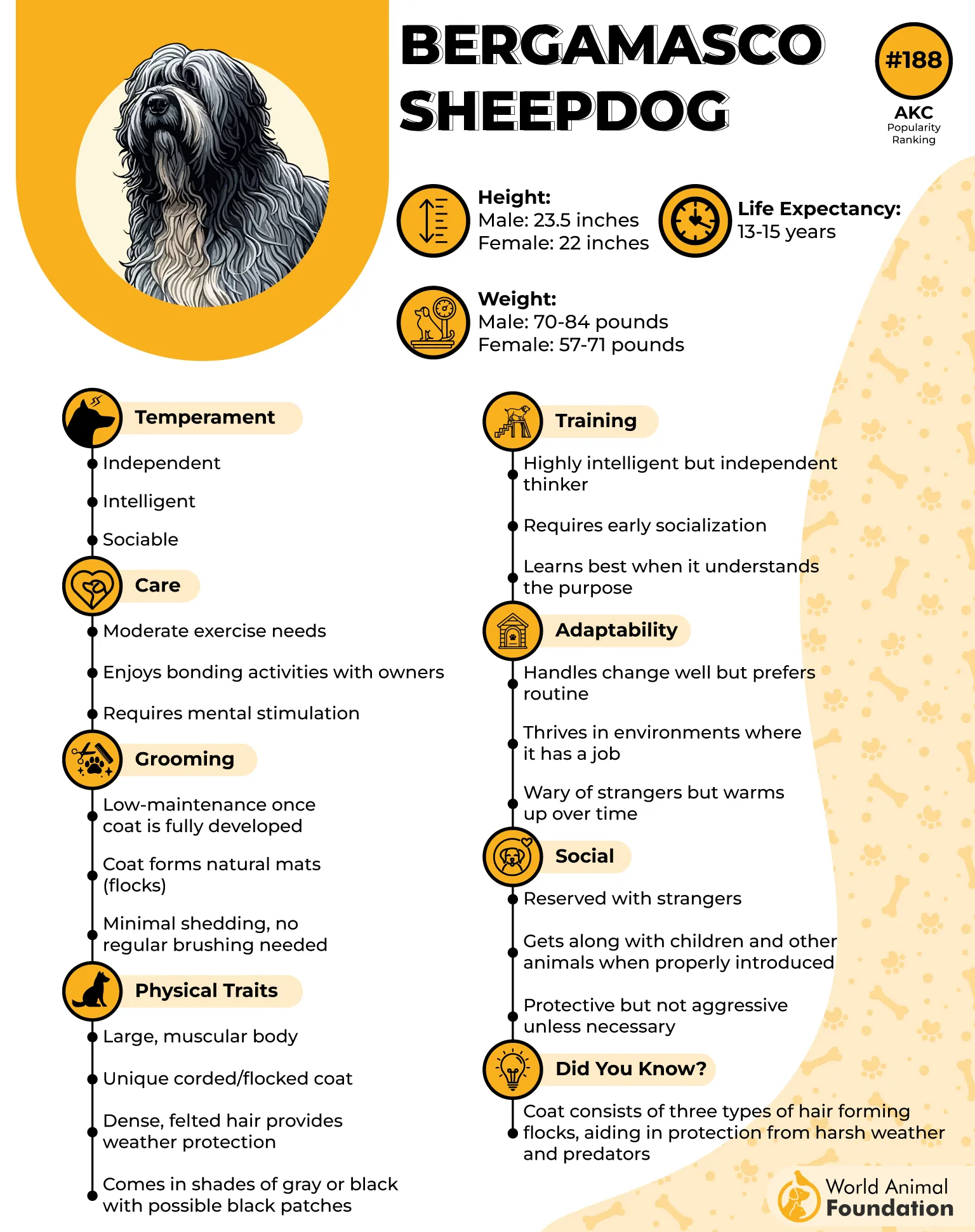
Originally used to herd and protect livestock in rugged mountain terrain, these dogs were built tough and smart. They developed a strong bond with their humans and learned how to think independently, making them reliable and resourceful partners.
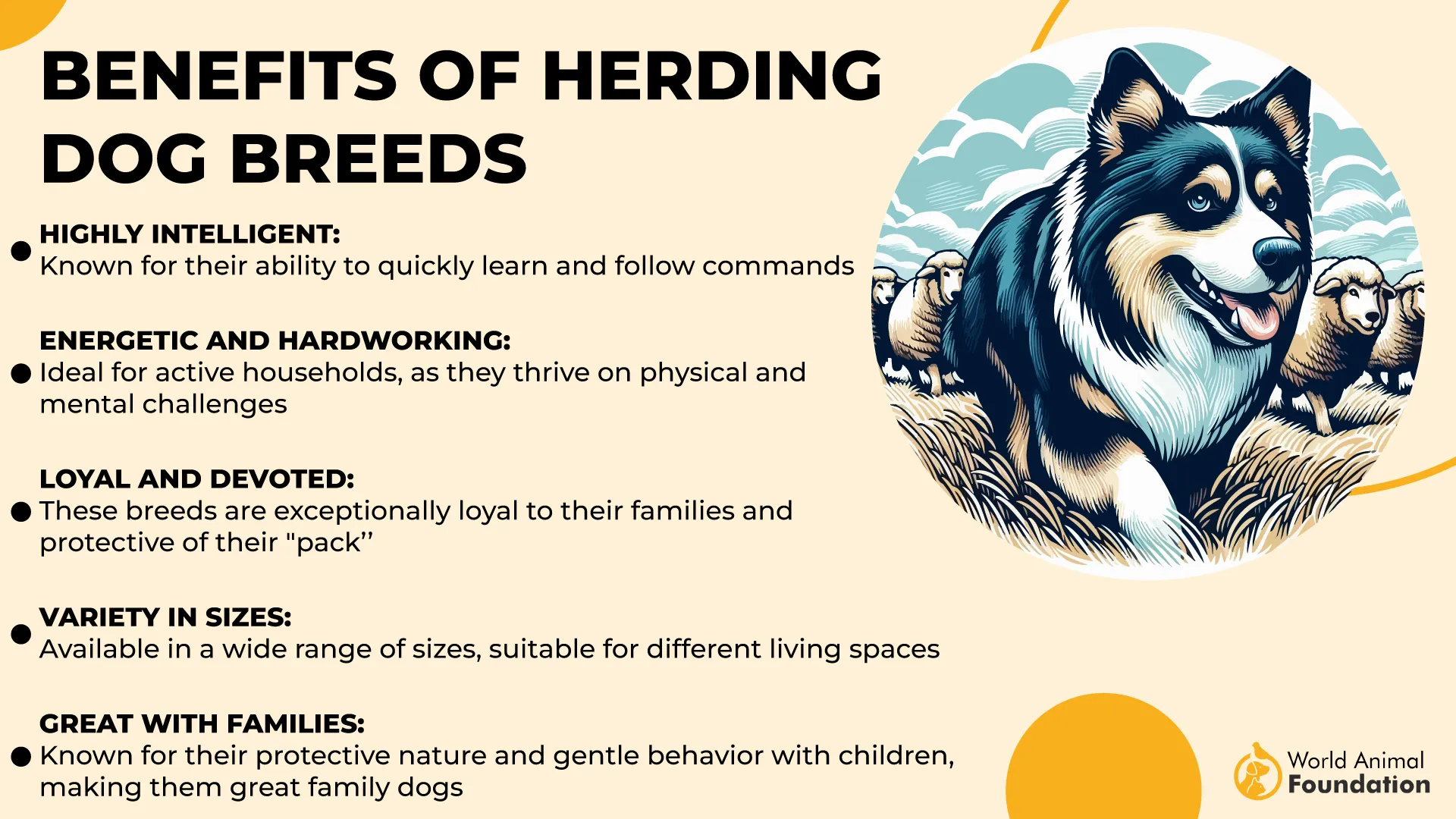
Let’s talk about the star of the show: that iconic coat. The Bergamasco’s fur is unlike anything you’ve seen. It naturally forms loose mats (called “flocks”) made from three types of hair—dog, goat, and wool—that intertwine into thick, felted layers.
These flocks aren’t just for show; they shield the dog from freezing temps and even from run-ins with wildlife. Plus, those extra-long lashes? Not just stylish—they protect the eyes from snow glare.
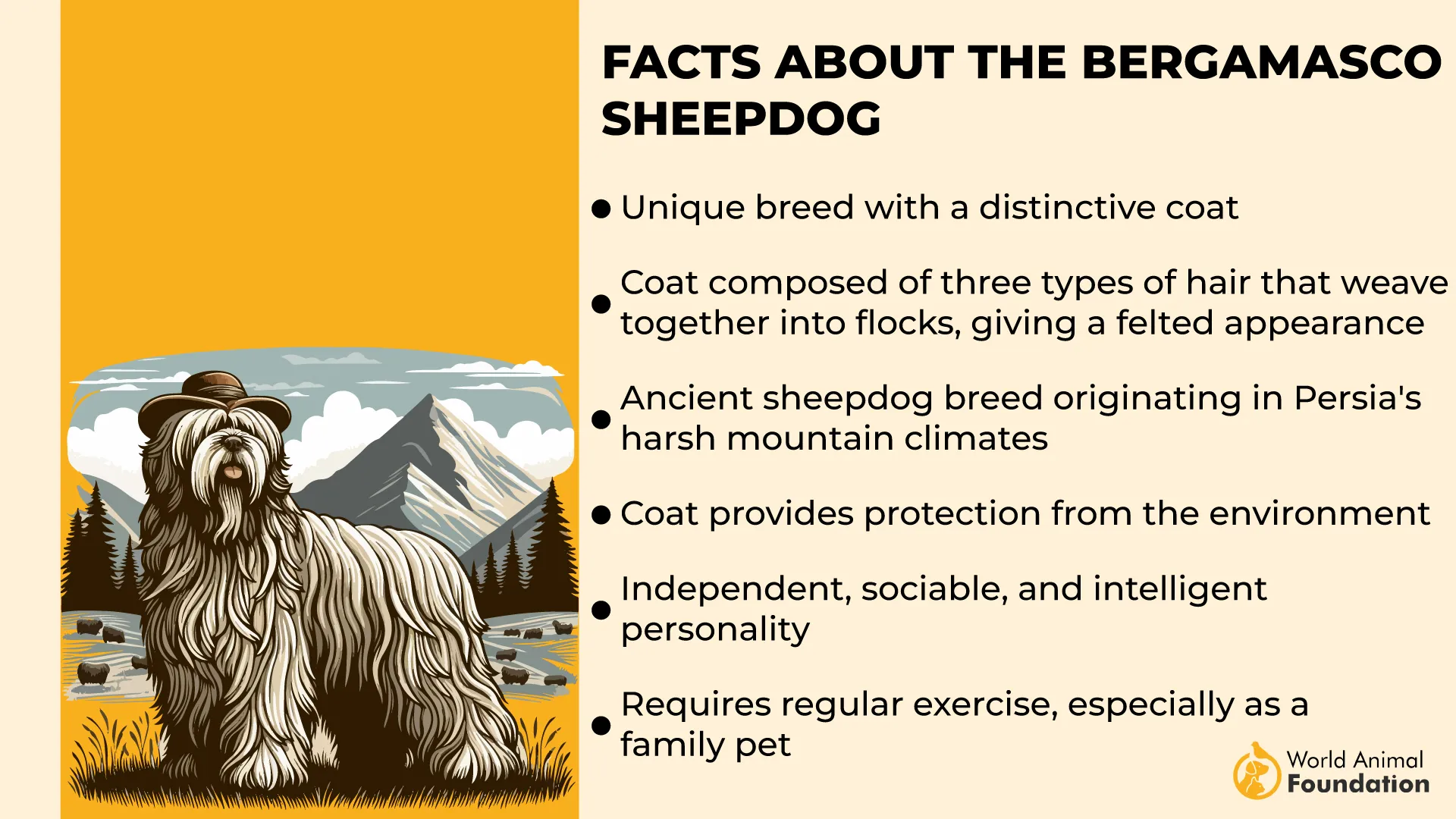
Underneath all that fuzz is a muscular, mellow guardian with a deep love for their pack. While they might seem calm, Bergamascos have plenty of playful energy. They’re happiest when included in daily activities—whether it’s a game of fetch, a scenic hike, or just a brisk walk around the block.
Fun Fact:
As noted by the American Kennel Club (AKC), the Bergamasco Sheepdog’s coat starts to naturally mat around its first birthday. The initial process of separating and shaping the mats, known as “ripping” the flocks, takes a few hours, and after that, the coat is essentially set for life.
2. Beauceron
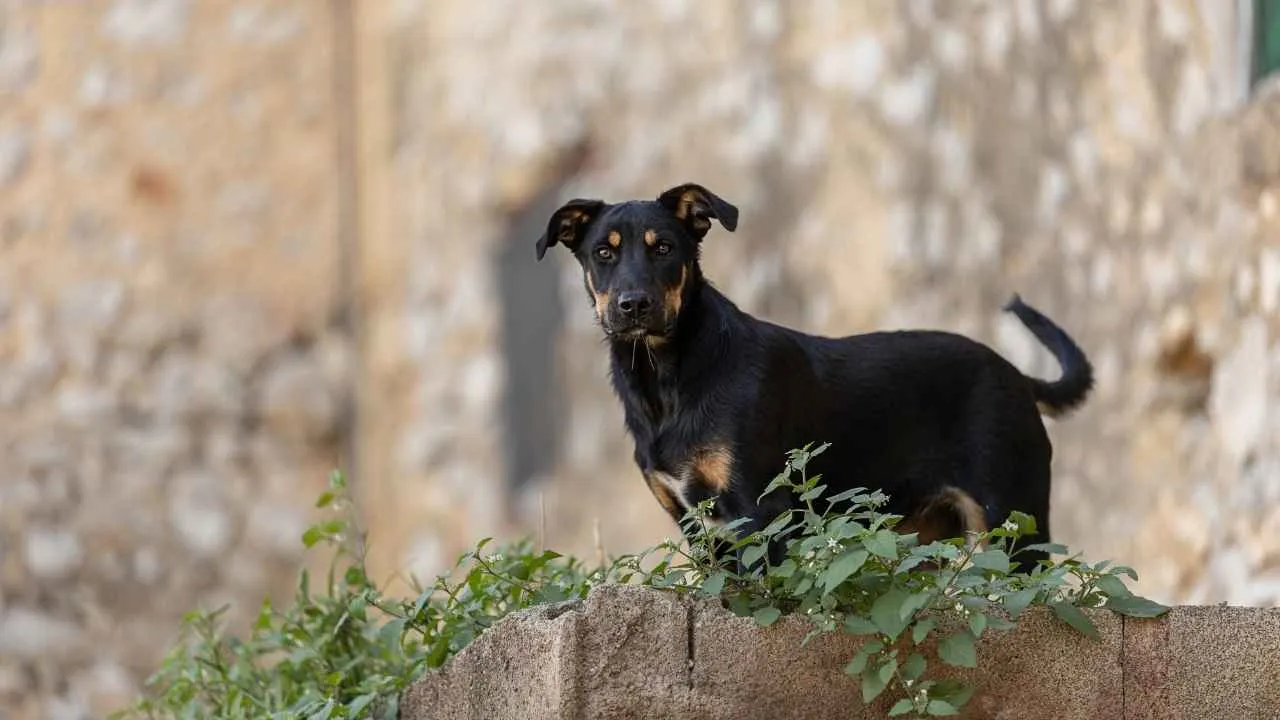
The Beauceron is a large, confident herding dog standing up to 27.5 inches tall. Its sleek black coat with rusty-red markings—especially on the feet—earned it the nickname Bas-Rouge, or “red stockings,” in France. With a long, chiseled face and confident eyes, this breed is both striking and smart, though sometimes a bit bossy.
Originally bred to herd livestock on French farms, Beaucerons later served as military messengers, mine detectors, and trackers. Today, they excel in police work, search and rescue, and active family life. However, they’re not ideal for first-time dog owners, as without proper training, they might try to herd their humans.
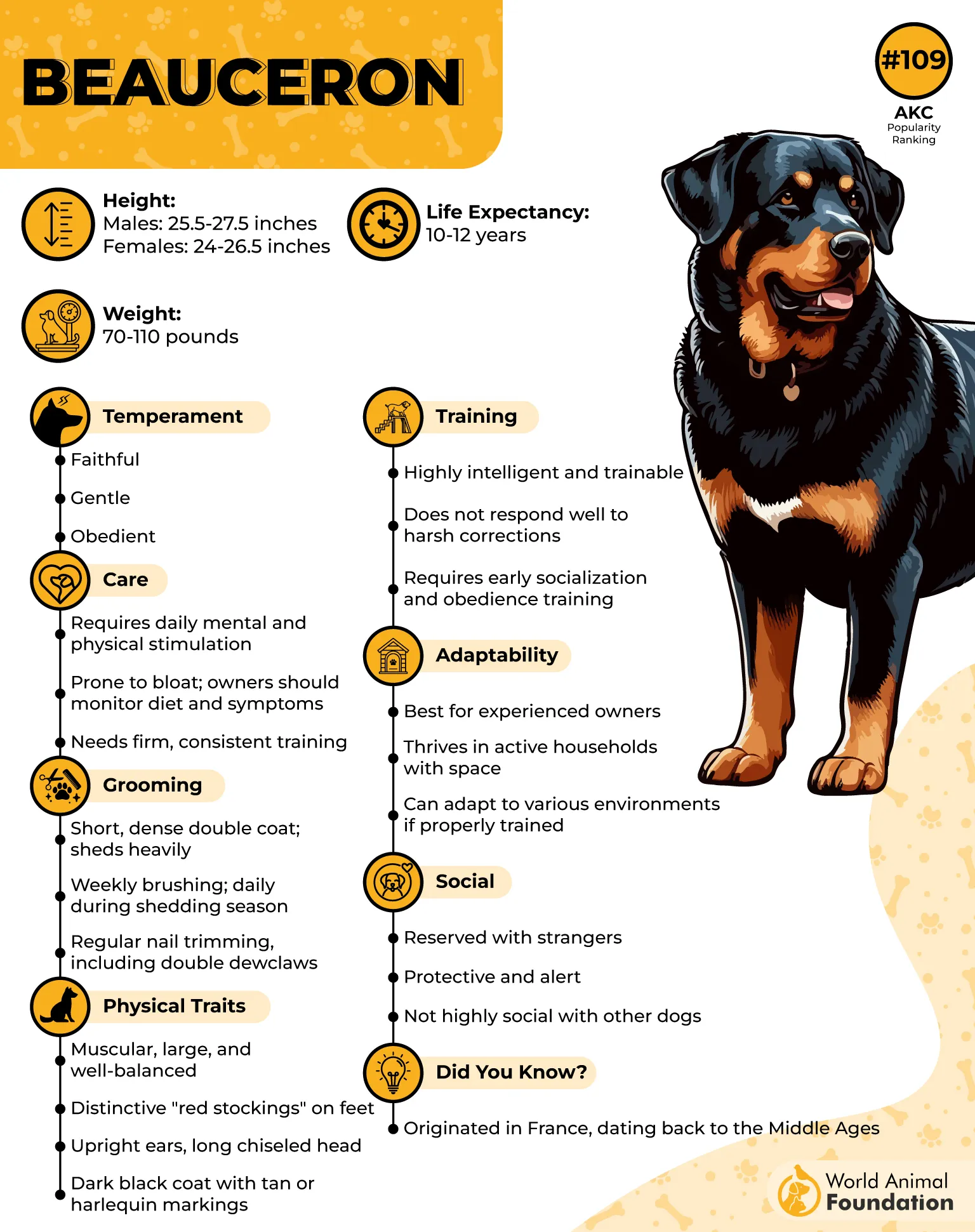
WebMD states Beaucerons are a fiercely loyal breed and protective, forming strong bonds with their families. They’re gentle with children, attentive to their people, and love being close companions, often following you everywhere—even onto the couch.
These dogs are intelligent, independent and strong willed, thriving on mental and physical stimulation and consistent training. Early socialization is essential to help them adjust to new people and environments.
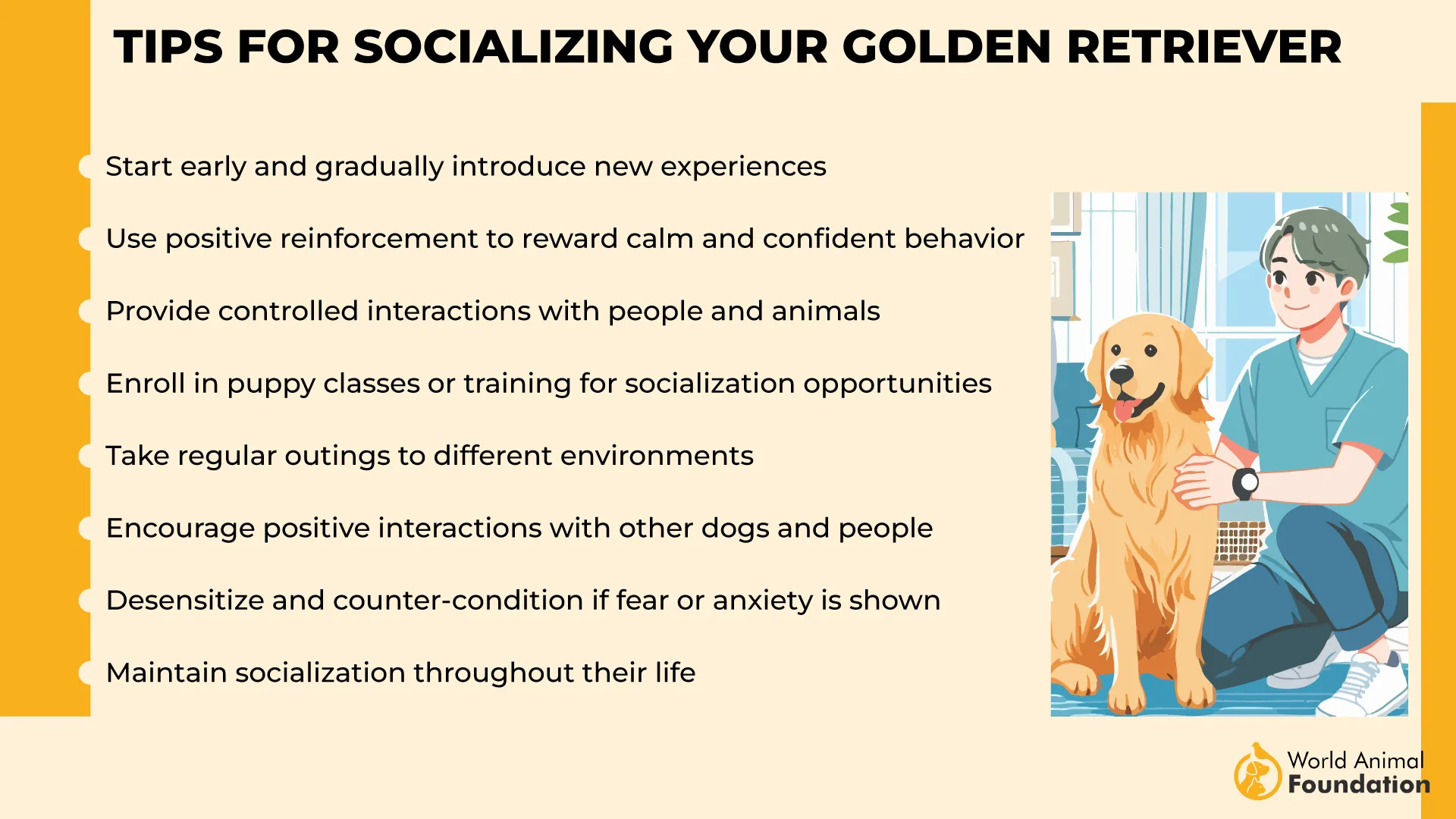
And heads up: They love to “mouth” things, so keep those tough chew toys handy!”
3. Old English Sheepdog
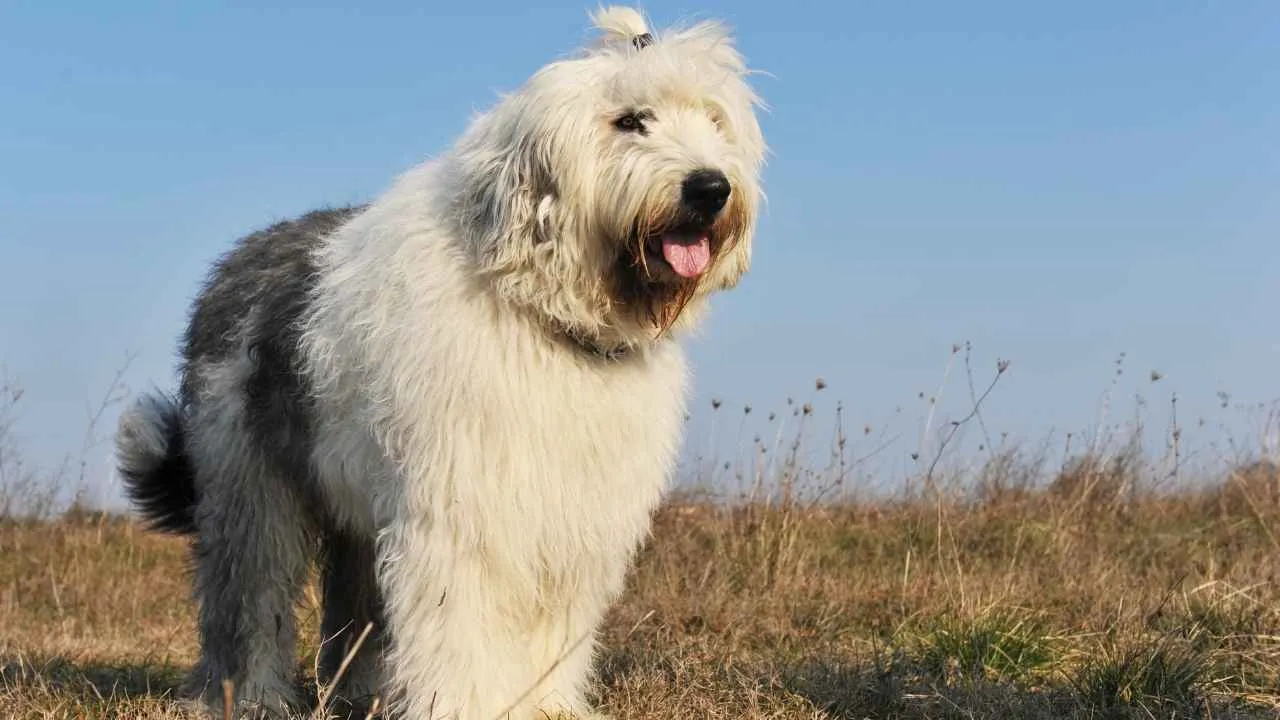
There’s no mistaking that fabulous floof—the Old English Sheepdog is basically a walking cloud with a heart of gold. Known for their comical personality and lovable nature, these dogs are as delightful as they are shaggy. Don’t be fooled by that bear-like amble—they’re surprisingly nimble and can weigh up to 90 pounds of pure charm.
Originally bred in 1800s England to herd and drive livestock, these powerhouse pups were once hardworking farm dogs. Nicknamed “Bobtails” due to the tradition of tail docking in working dogs, they’ve since transitioned from drovers to adored family pets.
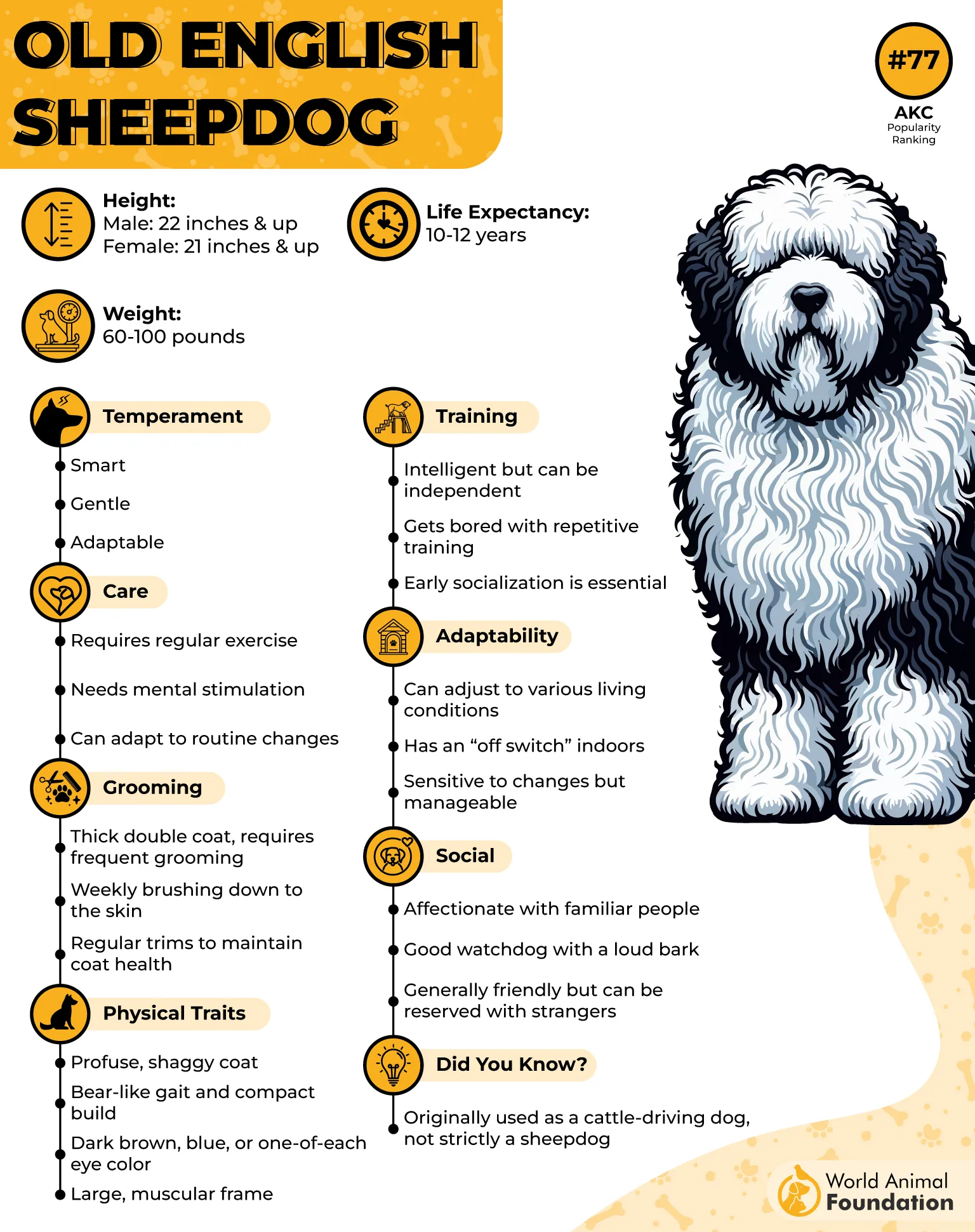
Old English Sheepdogs are known for their gentle and goofy vibe. They’re loyal to their people, great with kids, and rarely the barky type. While they’re not intense watchdogs, they’ll definitely step up if they sense a real threat. Just don’t expect them to act tough too often—they’re lovers, not fighters.
While their slow-motion strut might look like a fuzzy shuffle, don’t be fooled—they’ve got energy to burn. Regular walks, playtime, or romps in the yard are a must to keep them happy and fit. Think of it as exercise… but with extra fluff.
Yes, that glorious coat takes work. While it’s the breed’s signature look, grooming is not for the faint of heart. Daily brushing is key to keeping mats, dirt, and tangles at bay—and trust us, skipping it will only mean bigger grooming bills later.
Fun Fact:
A unique trait of Old English Sheepdogs is that they don’t just bark—they announce. Their signature sound has been described as having a “pot-casse” ring, which translates from French to “broken jar” or “cracked bell.” Imagine two pots clanging together—that’s the kind of volume and tone you can expect whenever something out of the ordinary grabs their attention.
4. Shetland Sheepdog
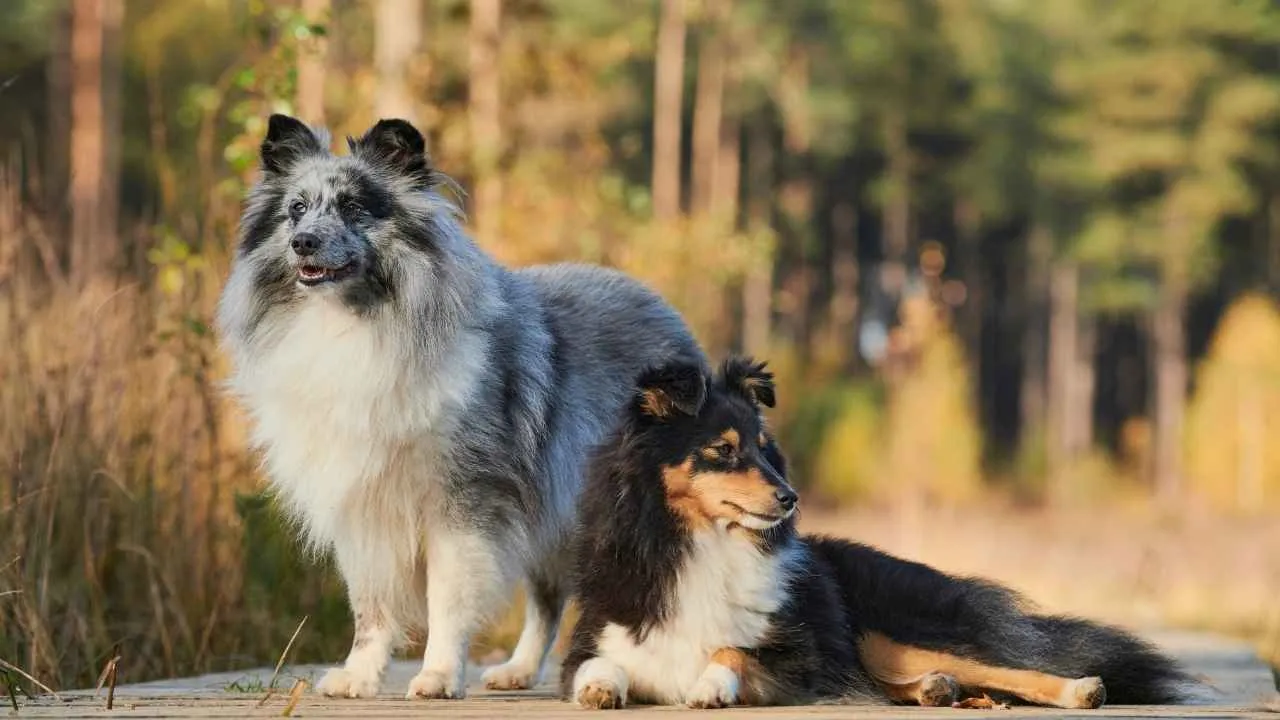
Straight from the rugged Shetland Islands of Scotland, the Shetland Sheepdog—or Sheltie—is a pint-sized herding dynamo. Though they look like mini Collies, Shelties are a unique breed shaped by tough terrain and the need for a versatile farmhand, originally herding sheep, poultry, and even ponies. They quickly became indispensable to island farmers.
Standing 13–16 inches tall and weighing 15–25 pounds, Shelties are agile, smart, and undeniably adorable. With their wedge-shaped heads, perky ears, and flowing double coats in various color combinations, they combine beauty with brains and hard work.
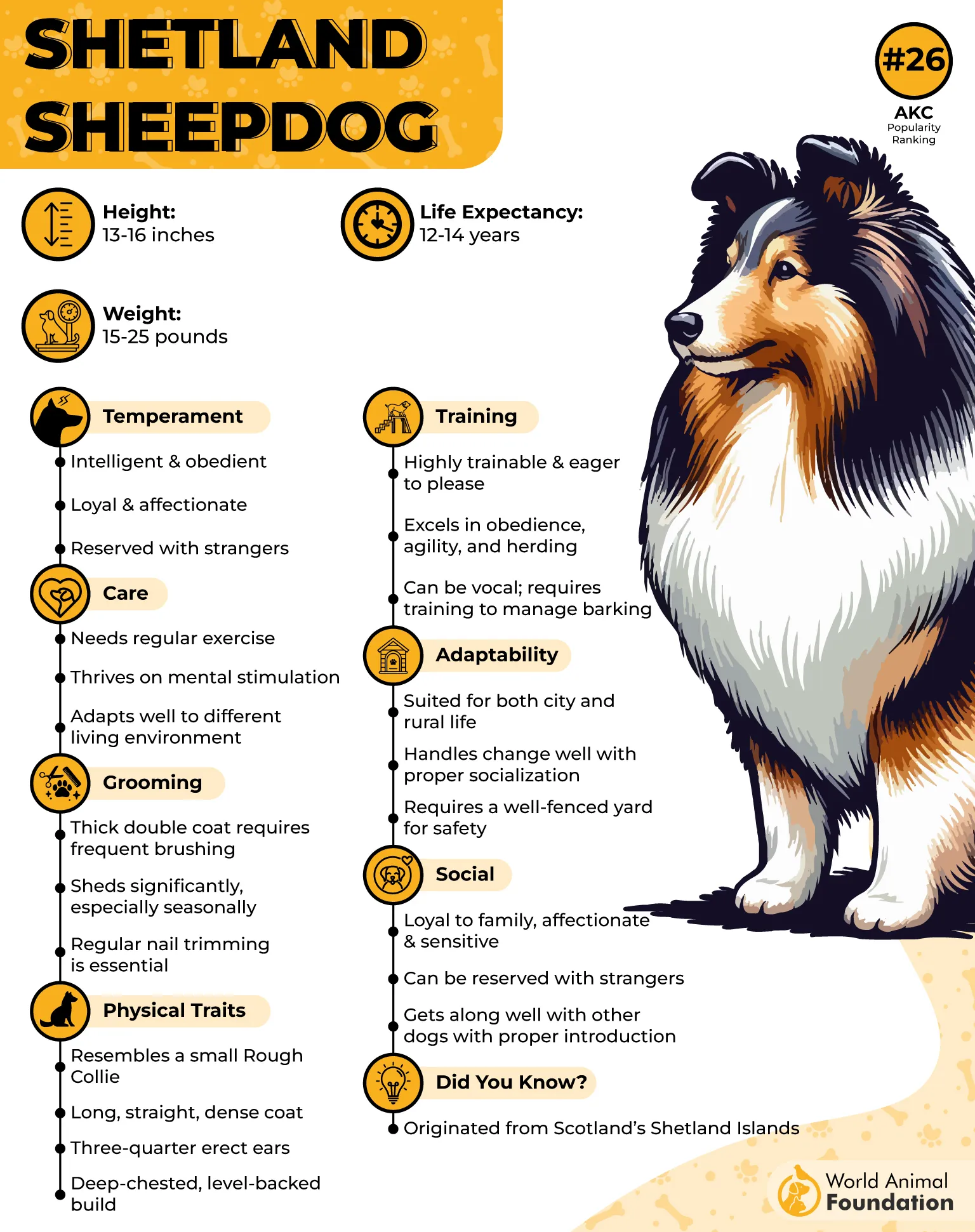
They excel in obedience and agility. Loyal and great with kids, they do tend to bark a lot, but with consistent training, this can be managed—unless they’re alerting you to something important, like the mailman.
PetMD states that despite their small size, Shelties are serious watchdogs. They’re often shy with strangers and quick to bark when someone’s at the door. Their strong herding instincts might lead them to herd small children, pets, or anything that moves—including squirrels or bikes.
Active and energetic, Shelties need daily exercise and mental stimulation. They adapt well to both apartment living and country homes as long as they get enough playtime and attention.
Their lush double coat is long and straight on top, dense and soft underneath, requiring weekly brushing to prevent tangles. During shedding season, grooming needs increase, but their coat repels dirt and water, so baths are only necessary when they get really messy.
Fun Fact
Shelties were once nicknamed “toonie dogs” (with “toon” being the Shetland word for farm), and they’ve earned their place in history. Though the breed didn’t gain fame outside the islands until the 20th century, it quickly charmed the world with its brains and beauty.
5. Belgian Sheepdog
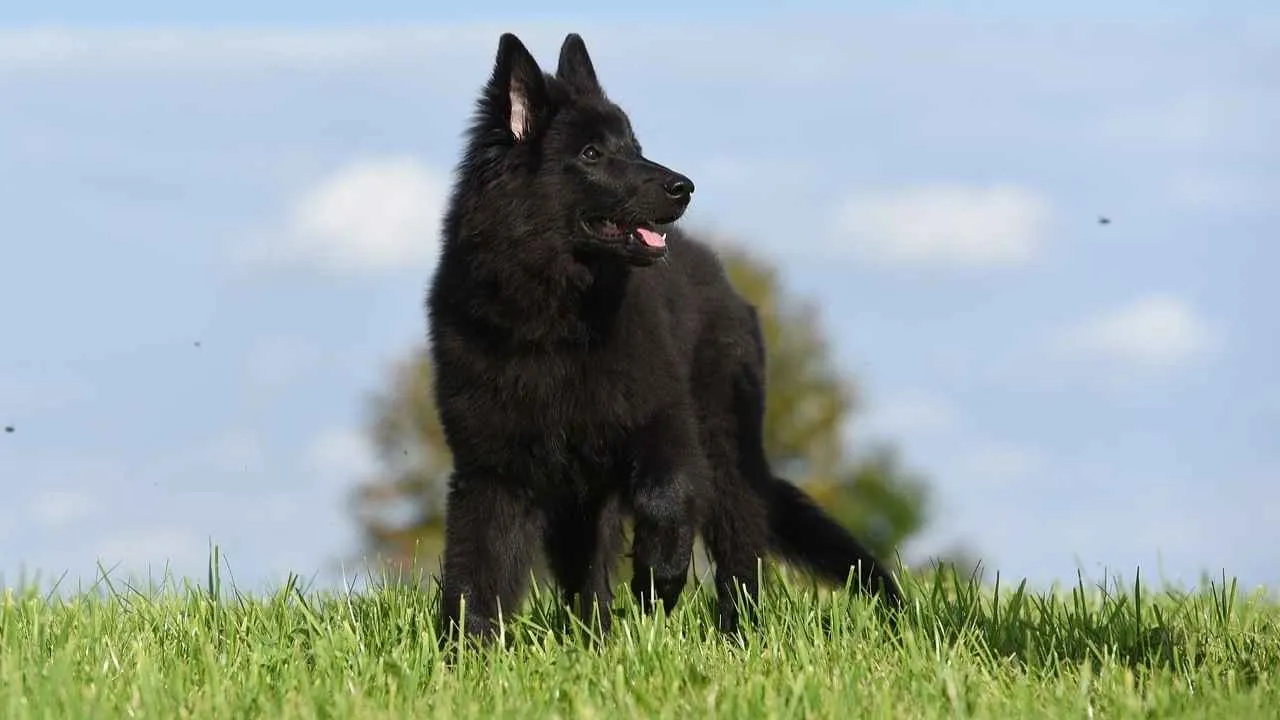
Straight from Groenendaal, Belgium, the Belgian Sheepdog—or Groenendael—is a striking breed with a long black coat, pointed muzzle, and sharp triangular ears. Standing 22 to 26 inches tall and weighing 50 to 60 pounds, they combine elegance with strength.
Historically, these versatile dogs served as herders, guard dogs, military messengers, and Red Cross helpers during wartime. Today, they remain valued partners in law enforcement and emergency services worldwide.
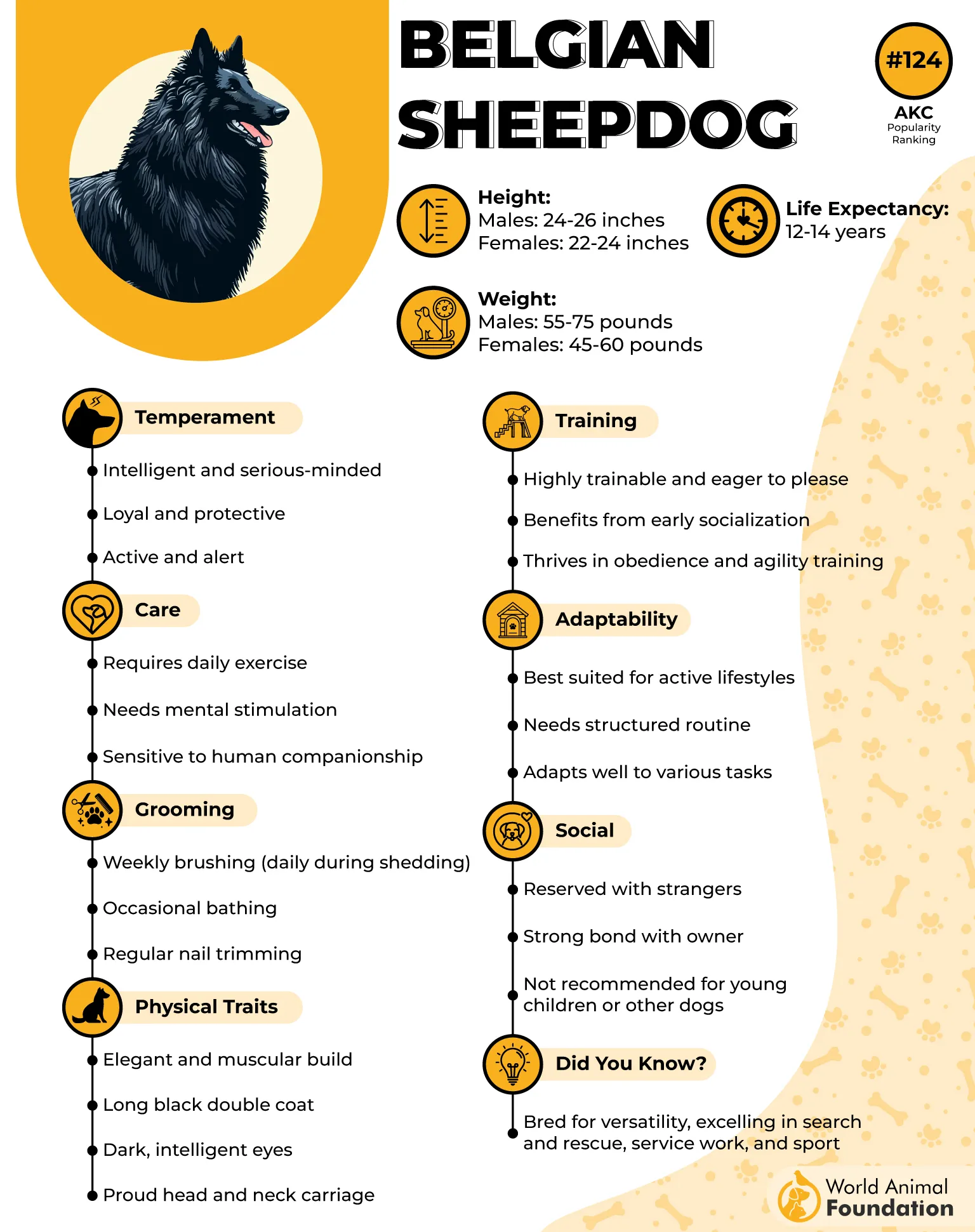
More than just looks, Belgian Sheepdogs are intelligent and fiercely loyal. They work tirelessly, whether herding, guarding, or playing with their humans. Their smarts and eagerness make them excellent in police, military service, search and rescue, and as service dogs.
Ideal for active families, Belgian Sheepdogs need daily exercise like hikes, bike rides, or runs to channel their energy.
They’re affectionate and protective with kids but may herd them or other pets. Fortunately, their intelligence makes training straightforward with consistent effort.
6. Belgian Laekenois
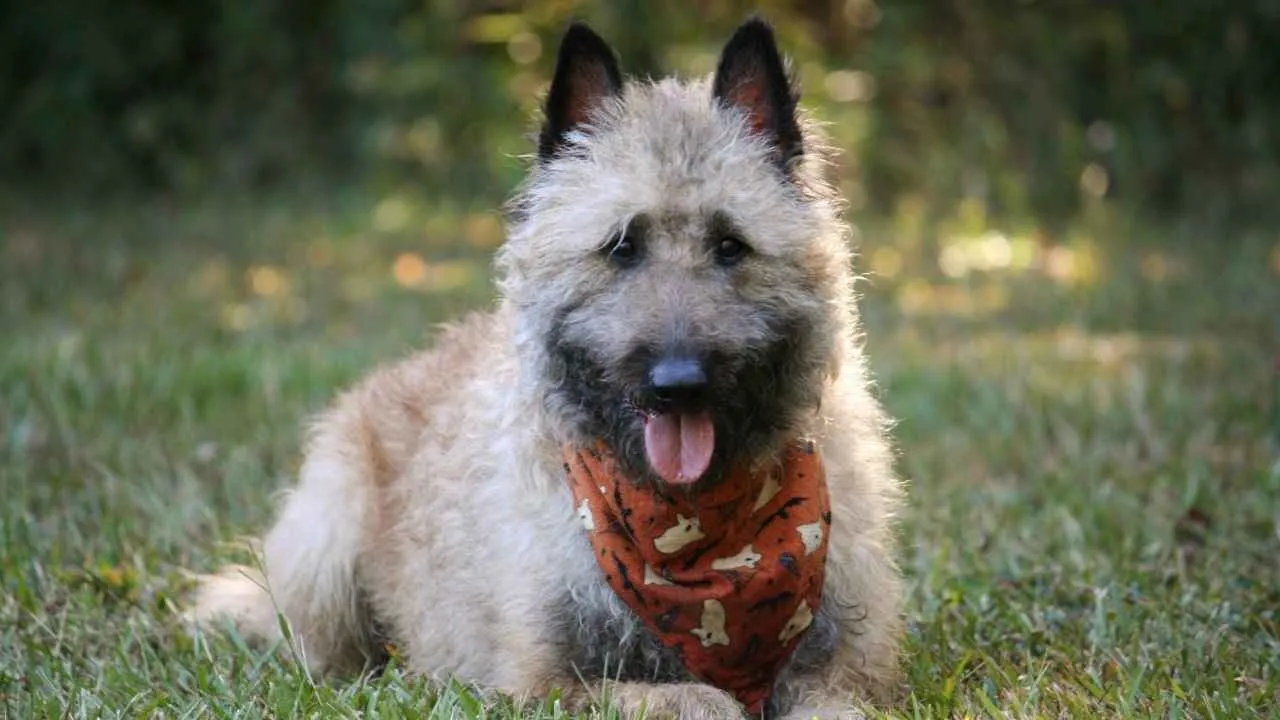
Among the four native Belgian Shepherd breeds, the Laekenois (pronounced “Lak-in-wah”) is the rarest—and arguably the most charming, with its tousled coat and soulful eyes. Originally bred to herd sheep and other livestock, this shaggy guardian brings both intelligence and loyalty to its owner.
Often mistaken for Belgian Malinois, the Laekenois stands out with its unique coat texture and origins at the Château of Laeken.
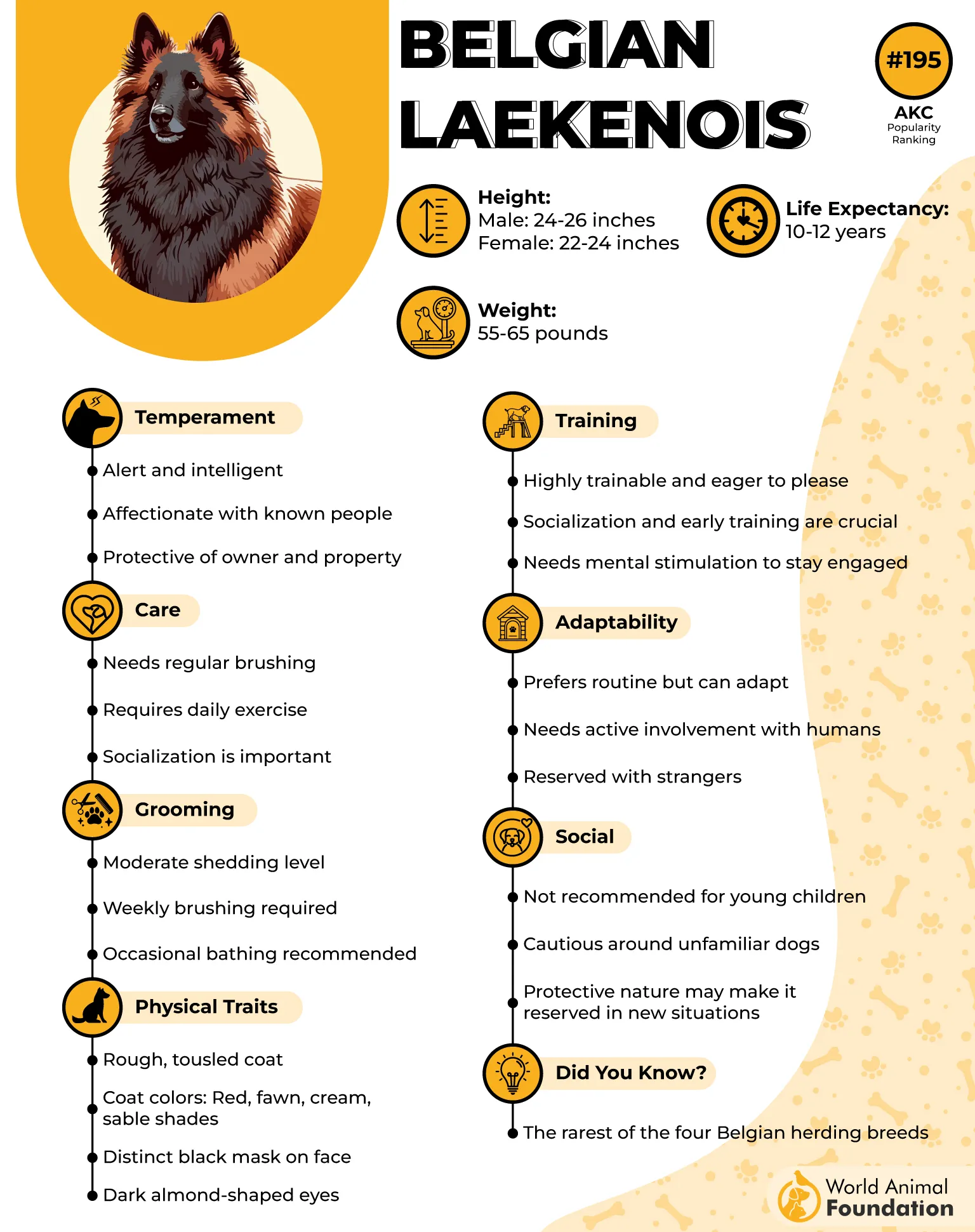
While not overly hyper, they need steady physical and mental exercise to prevent boredom and the resulting chewing. They thrive on interactive games, puzzle toys, and daily walks or playtime. Like many herders, they may gently nip to herd, so watch this behavior around young children.
This breed is cautious around strangers and is a devoted family guardian. Observant and thoughtful, it’s always ready to act when needed. With proper training, Laekenois makes an excellent companion in homes that offer structure, kindness, and regular activity.
Though adaptable, Laekenois dislikes long periods alone. They crave connection and purpose, and with consistent early training, they can happily live in both apartments and suburban homes, as long as they’re included in daily life.
Did You Know?
The Laekenois is named after the Belgian Chateau de Laeken, which was often visited by Queen Henrietta of Belgium, who was a devotee of the breed. The Laekenois is the rarest and least-known of the four Belgian Shepherd breeds.
7. Pyrenean Shepherd
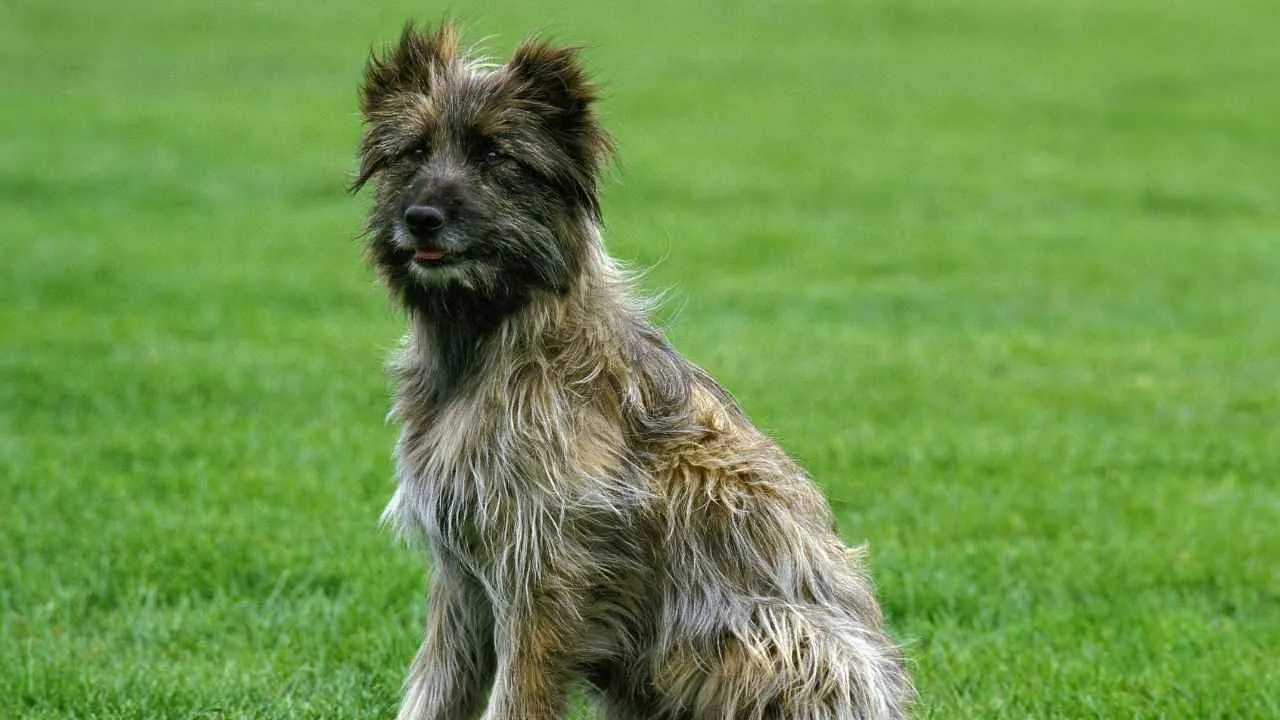
Hailing from the stunning Pyrenees Mountains of France, the Pyrenean Shepherd (or Berger des Pyrénées, if you want to get fancy) is a small-to-medium-sized herding breed with a big personality.
Pyr Shep fans often use the nickname “Pyr Shep” because, well, it’s just easier to say! Don’t mix these guys up with the Great Pyrenees—those fluffy giants are a whole different story.
These little dynamos have been on the job since as early as 6000 BC, herding sheep and goats high in the mountains. During World War I, Pyrs were more than just herders—they served as messengers, guards, and rescue dogs. After the war, they continued herding and took center stage in canine competitions, proving they were as smart as they were hardworking.
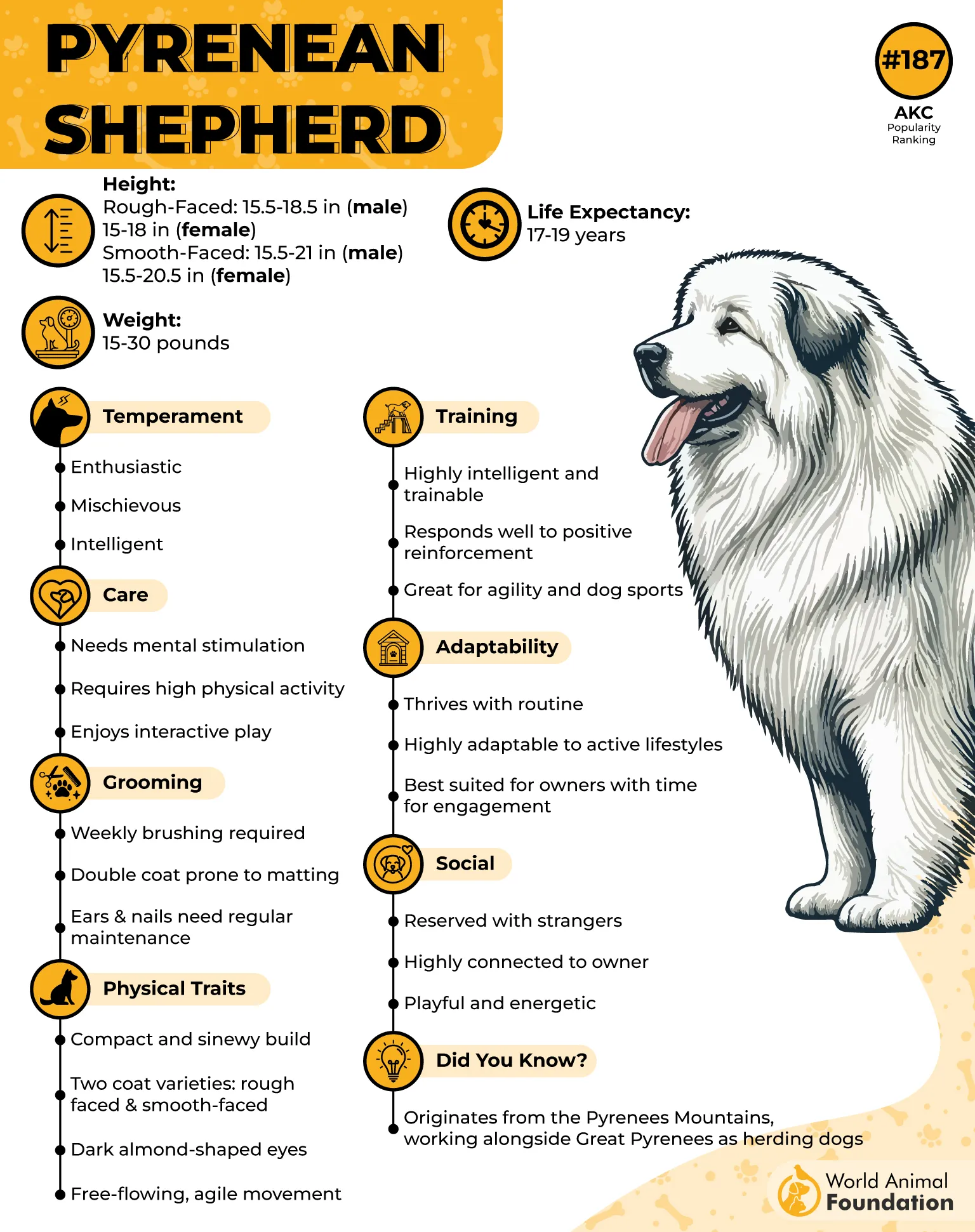
A member of AKC’s herding group, the Pyrenean Shepherd comes in two distinct styles: the rough-faced, sporting a thick, coarse coat, and the smooth-faced, with softer, finer hair. They may look different, but both types are tough, weather-resistant, and built to handle the rugged mountain life. Great Britain even treats them as separate breeds because they’re that unique!
If you’re someone who loves to stay busy, a Pyr Shep might just be your new best buddy. Highly energetic and agile, these dogs require plenty of exercise and mental challenges. Whether it’s agility courses, obedience, or herding trials, these dogs shine when given a job to do.
They’re loyal and good-natured and affectionate with their families, forming tight bonds and always ready to offer love and protection. While they can be a bit shy around strangers, they’re excellent watchdogs, quick to alert you to anything unusual.
Conclusion
Herding dog breeds like the Border Collie, Australian Shepherd, German Shepherd, and Pembroke Welsh Corgi aren’t just skilled at managing cattle and other animals—they also make great companions. Whether it’s the blue merle Australian Cattle Dog, the red merle Aussie, or the solid black Bearded Collie, each breed brings unique talents and personality.
From the national dog status of the German Shepherd to the compact size of the Cardigan Welsh Corgi, these dogs—along with lesser-known stars like the Berger Picard, Bouvier des Flandres, and Polish Lowland Sheepdog—shine in the working group and in homes.
Their intelligence, loyalty, and versatility make them beloved by families and farmers alike, standing out among many dogs as natural-born leaders and lovable sidekicks.


